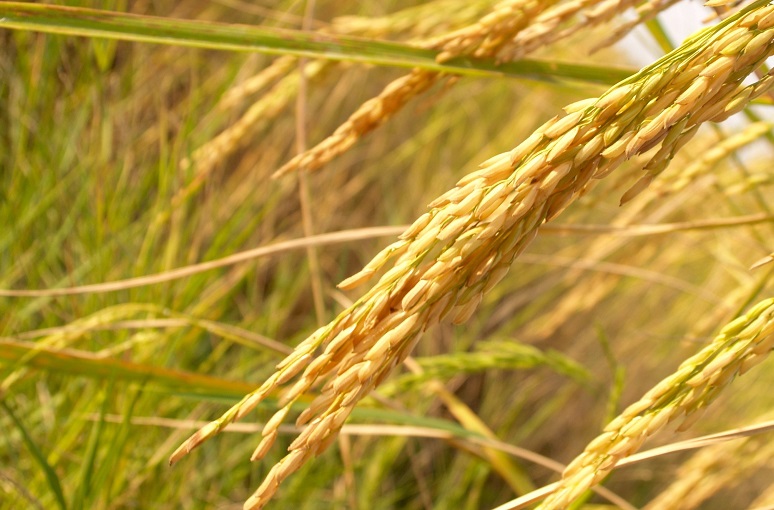Rice Field and Soil Preparation

This post is also available in:
This post is also available in:
![]() Español (Spanish)
Español (Spanish) ![]() Français (French)
Français (French) ![]() Deutsch (German)
Deutsch (German) ![]() Nederlands (Dutch)
Nederlands (Dutch) ![]() हिन्दी (Hindi)
हिन्दी (Hindi) ![]() العربية (Arabic)
العربية (Arabic) ![]() Türkçe (Turkish)
Türkçe (Turkish) ![]() 简体中文 (Chinese (Simplified))
简体中文 (Chinese (Simplified)) ![]() Русский (Russian)
Русский (Russian) ![]() Italiano (Italian)
Italiano (Italian) ![]() Ελληνικά (Greek)
Ελληνικά (Greek) ![]() Português (Portuguese (Brazil))
Português (Portuguese (Brazil)) ![]() Indonesia (Indonesian)
Indonesia (Indonesian) ![]() polski (Polish)
polski (Polish)
Rice is a resilient plant and can grow in almost all types of soil. As long as it is irrigated sufficiently (either by irrigation or by rainfall), it can grow in both wet or dry fields. However, since we expect a good yield from our field, we have to prepare the soil, so that it can welcome either the young rice plants (transplant method) or the pre-germinated and incubated seeds (direct seeding method).
First of all, rice paddies must be cleared from weeds and unwanted materials. Many rice farmers plow and till the field, in order to achieve soil overturn. Furthermore, in some cases, a harrowing helps them break the lump of soil, also known as a clod, into smaller parts. Laser Land leveling is also very common among commercial rice growers.
Keep in mind that every field is different and has different needs. You are strongly advised to consult a local licensed agronomist in order to form a rational field preparation plan.
There are two major types of land preparation, wet preparation, and dry preparation.
Wet Preparation
Wet preparation is an option for upland and lowland fields. This method requires a large amount of water to prepare the field for the near future cultivation. With this method, the soil is adequately tilled in waterlogged conditions. We can take into consideration the following steps to prepare the rice paddy.
Step 1: Construction or repair of dikes. In general, dikes help the field hold water from rainfall. We can build 19×12 inches (50×30 cm) dikes around the field. Many rice farmers report that each channel has a 1,1-1,9 inches (3-5 cm) height. The purpose is to ensure water availability during rainy periods.
Step 2: Field irrigation. After the construction of water channels, many rice farmers irrigate the field at least for a week. This helps the soil become smooth, soft and ready for plowing.
Step 3: Tillage procedures. We can perform tillage after the soil is adequately irrigated. When the soil is wet enough, the chances are that it is ready for plowing.
Step 4: Flooding of the Field. After plowing, rice farmers often flood the field for about 2 weeks.
Step 5: Secondary tillage procedures. This step is often performed at least 10 days after the first tillage. It involves field puddling and harrowing. Puddling can be done with rotavators and power tillers. Soil becomes muddy. Soil nutrient preservation and availability can normally be accomplished with this method. Then, we may harrow the rice paddy 2-3 times in a time window from 5-7 days.
Step 6: Field leveling. The final step in wet preparation takes place two days before planting. Tractors or animals can help this procedure. A wooden plank attached to them will cross all over the field and level it. The even soil surface is essential for the proper growth of the crops.
Dry Preparation
Dry preparation is an option for both lowland and upland fields. This kind of preparation needs less water. We can take into account the following steps to prepare the rice paddy.
Step 1: Construction of dikes. As mentioned before, dikes help the field hold water from rainfall. We may build 19×12 inches (50×30 cm) dikes around the field. Each channel normally has a 1,1-1,9 inches (3-5 cm) height. The purpose here is to ensure water availability during rainy periods.
Step 2: Tillage procedures. We may perform tillage after the soil is adequately irrigated.
Step 3: Secondary tillage procedures. Farmers often harrow and till the field with a rototiller.
Step 4: Field leveling. In dry preparation, we have a short amount of water in the field. In this case, we normally do not have to use a wooden plank to level it. Laser Land leveling is commonly used in this case. The even soil surface is essential for good growth of the crops.
Step 5: Weed control. A common way to prevent the growth of weeds is to let them grow for at least two weeks. After their appearance, farmers often apply herbicides (always ask a licensed agronomist before using any crop protection product). We must be very careful about any potential herbicide effects.
How to grow Rice – Rice Complete Growing Guide from Seeding to Harvest
Rice Field and Soil Preparation
Rice Planting, Seeding Requirements – Seed Rate of Rice
Nutrient Management in Rice Crops – Rice Plant Fertilization
Rice Harvesting, Yield per Hectare and Storage
Do you have experience in growing rice? Please share your experience, methods and practices in the comments below. All the content you add will be soon reviewed by our agronomists. Once approved, it will be added to Wikifarmer.com and it will influence positively thousands of new and experienced farmers across the world.








































































